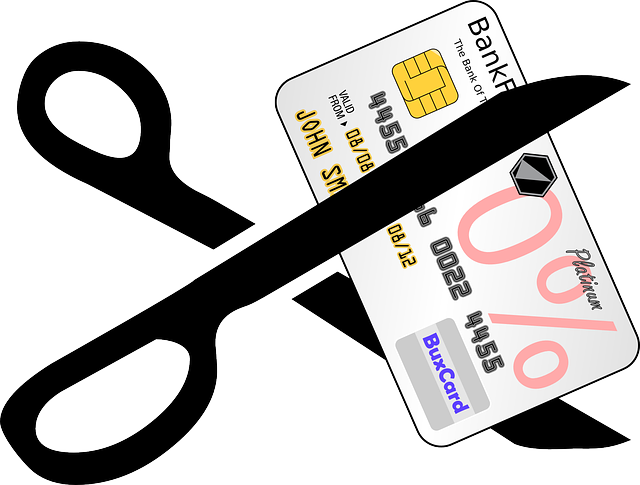Debt consolidation loans offer structured repayment plans, with key differences between secured and unsecured options. Secured loans, backed by assets, provide lower rates and fixed terms but risk losing collateral upon default. Unsecured loans, lacking collateral, offer flexibility but higher variable rates. For consolidating credit card debt, unsecured loans are appealing due to convenience and wider accessibility. Evaluating financial health, comparing loan terms, and understanding interest rates are crucial for making an informed decision, ensuring the best outcome for debt relief.
Struggling with multiple credit card debts? Consider debt consolidation loans as a potential solution. This guide breaks down the key differences between secured and unsecured options, helping you make an informed choice. Secured loans use an asset as collateral, offering potentially lower rates but higher risk, while unsecured loans are risk-free but may have higher interest rates. By understanding the pros and cons of each type, you can strategically select the best method to consolidate your credit card debt effectively.
- Understanding Secured and Unsecured Debt Consolidation Loans
- Advantages and Disadvantages of Each Loan Type
- Strategies to Choose the Best Debt Consolidation Option for Your Situation
Understanding Secured and Unsecured Debt Consolidation Loans
Debt consolidation loans are a popular tool for managing and reducing debt, offering individuals a streamlined repayment plan. However, it’s essential to understand the distinction between secured and unsecured options. Secured loans are backed by an asset, usually a property or vehicle, serving as collateral. This adds a layer of protection for lenders, often resulting in lower interest rates and more favorable terms for borrowers. For instance, if you consolidate credit card debt with a secured loan, the equity in your home might be at stake, but it could mean paying off high-interest credit cards at a lower rate.
Unsecured loans, on the other hand, do not require collateral, making them riskier for lenders. As such, they typically carry higher interest rates and may have stricter borrowing criteria. While this type of loan doesn’t tie your assets to the debt, it could mean shorter repayment periods or higher monthly payments. When considering consolidation, borrowers should weigh these factors, evaluating which type aligns best with their financial situation and goals, particularly when aiming to consolidate credit card debt effectively.
Advantages and Disadvantages of Each Loan Type
Advantages and Disadvantages of Secured and Unsecured Debt Consolidation Loans
Secured Debt Consolidation Loans: One of the key benefits is access to potentially lower interest rates, as they’re often tied to a collateralized asset like real estate or vehicles. This can significantly reduce monthly payments and save money in the long run. Additionally, these loans typically offer fixed interest rates, providing borrowers with predictable repayment terms. However, one significant disadvantage lies in the risk of losing the collateral if the borrower defaults on payments. Secured loans might also require more extensive credit checks and documentation, making them less accessible to those with limited or poor credit.
Unsecured Debt Consolidation Loans: These loans offer flexibility and convenience as they don’t require any collateral, removing the risk of losing assets. They’re often easier to qualify for, appealing to borrowers with lower credit scores. Unsecured loans also provide the freedom to use the funds for various purposes, including consolidating credit card debt. However, interest rates tend to be higher compared to secured loans, and they may come with variable interest rates, making future payment amounts less predictable. Lenders typically conduct credit checks, but the requirements might not be as stringent as those for secured loans.
Strategies to Choose the Best Debt Consolidation Option for Your Situation
When deciding between secured and unsecured debt consolidation loans, it’s crucial to assess your financial situation and goals. Secured loans require collateral, often your home or vehicle, providing lower interest rates but carry the risk of losing that asset if you default. Unsecured loans, while riskier for lenders, offer greater flexibility as they don’t require collateral, but typically come with higher interest rates. The best option depends on factors like your credit score, available assets, and how quickly you need debt relief.
Strategies to choose include comparing loan terms, understanding interest rates, evaluating fees, and considering your ability to repay. If you have a strong credit history and can afford the payments, an unsecured loan might be suitable. Conversely, if you seek lower rates and are willing to use an asset as collateral, a secured loan could be beneficial. Prioritize transparency from lenders, read fine print carefully, and consider seeking expert advice for informed decision-making when consolidating credit card debt.
When considering debt consolidation, whether secured or unsecured, the key is to evaluate your financial situation and goals. Secured loans offer lower interest rates but require collateral, while unsecured loans are easier to qualify for with no collateral needed. By understanding the advantages and disadvantages of each type, you can make an informed decision to effectively consolidate your credit card debt and achieve better financial management. Choosing the right loan option aligns with your unique circumstances, ensuring a smoother path towards financial stability.
